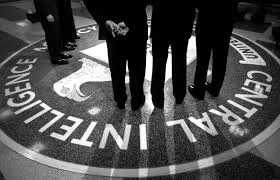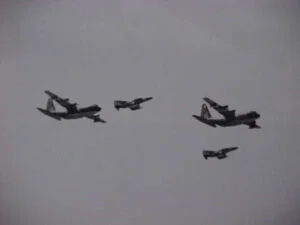“Conspiracy theory” is a term that at once strikes fear and anxiety in the hearts of most every public figure, particularly journalists and academics. Since the 1960s the label has become a disciplinary device that has been overwhelmingly effective in defining certain events off limits to inquiry or debate. Especially in the United States raising legitimate questions about dubious official narratives destined to inform public opinion (and thereby public policy) is a major thought crime that must be cauterized from the public psyche at all costs.
Conspiracy theory’s acutely negative connotations may be traced to liberal historian Richard Hofstadter’s well-known fusillades against the “New Right.” Yet it was the Central Intelligence Agency that likely played the greatest role in effectively “weaponizing” the term. In the groundswell of public skepticism toward the Warren Commission’s findings on the assassination of President John F. Kennedy, the CIA sent a detailed directive to all of its bureaus. Titled “Countering Criticism of the Warren Commission Report,” the dispatch played a definitive role in making the “conspiracy theory” term a weapon to be wielded against almost any individual or group calling the government’s increasingly clandestine programs and activities into question.
This important memorandum and its broad implications for American politics and public discourse are detailed in a book by Florida State University political scientist Lance deHaven-Smith, Conspiracy Theory in America. Dr. deHaven-Smith devised the state crimes against democracy concept to interpret and explain potential government complicity in events such as the Gulf of Tonkin incident, the major political assassinations of the 1960s, and 9/11.
CIA Document 1035-960 was released in response to a 1976 FOIA request by the New York Times. The directive is especially significant because it outlines the CIA’s concern regarding “the whole reputation of the American government” vis-à-vis the Warren Commission Report. The agency was especially interested in maintaining its own image and role as it “contributed information to the [Warren] investigation.”
The memorandum lays out a detailed series of actions and techniques for “countering and discrediting the claims of the conspiracy theorists, so as to inhibit the circulation of such claims in other countries.” For example, approaching “friendly elite contacts (especially politicians and editors)” to remind them of the Warren Commission’s integrity and soundness should be prioritized. “[T]he charges of the critics are without serious foundation,” the document reads, and “further speculative discussion only plays in to the hands of the [Communist] opposition.”
The agency also directed its members “[t]o employ propaganda assets to [negate] and refute the attacks of the critics. Book reviews and feature articles are particularly appropriate for this purpose.”
1035-960 further delineates specific techniques for countering “conspiratorial” arguments centering on the Warren Commission’s findings. Such responses and their coupling with the pejorative label have been routinely wheeled out in various guises by corporate media outlets, commentators and political leaders to this day against those demanding truth and accountability about momentous public events.
- No significant new evidence has emerged which the [Warren] Commission did not consider.
- Critics usually overvalue particular items and ignore others.
- Conspiracy on the large scale often suggested would be impossible to conceal in the United States.
- Critics have often been enticed by a form of intellectual pride: they light on some theory and fall in love with it.
- Oswald would not have been any sensible person’s choice for a co-conspirator.
- Such vague accusations as that “more than ten people have died mysteriously” [during the Warren Commission’s inquiry] can always be explained in some natural way e.g.: the individuals concerned have for the most part died of natural causes.
Today more so than ever news media personalities and commentators occupy powerful positions for initiating propaganda activities closely resembling those set out in 1035-960 against anyone who might question state-sanctioned narratives of controversial and poorly understood occurrences. Indeed, as the motives and methods encompassed in the document have become fully internalized by intellectual workers and operationalized through such media, the almost uniform public acceptance of official accounts concerning unresolved events such as the Oklahoma City Murrah Federal Building bombing, 9/11, and most recently the Sandy Hook Elementary School massacre, is largely guaranteed.
The effect on academic and journalistic inquiry into ambiguous and unexplained events that may in turn mobilize public inquiry, debate and action has been dramatic and far-reaching. One need only look to the rising police state and evisceration of civil liberties and constitutional protections as evidence of how this set of subtle and deceptive intimidation tactics has profoundly encumbered the potential for future independent self-determination and civic empowerment.
So, the CIA campaign used members of mainstream media friendly to the CIA to discredit New Orleans District Attorney Jim Garrison. Garrison was prosecuting New Orleans businessman Clay Shaw in what Garrison alleged was a conspiracy to murder Kennedy. Shaw, an OSS liaison to high-ranking British officials during World War II, founded a major regional trade mart in New Orleans shortly after the war. Garrison alleged that Shaw met with rightist opponents of JFK to plan the death.
A 50-page CIA memo, known as “CIA Dispatch 1035-960,” instructed agents to contact their media contacts and disparage those, like Garrison, criticizing the Warren Commission findings that Lee Harvey Oswald killed JFK and acted alone. The 1967 document is here in the original, and here in reformatted text of its summary.
Source: https://projectunspeakable.com/conspiracy-theory-invention-of-cia/



